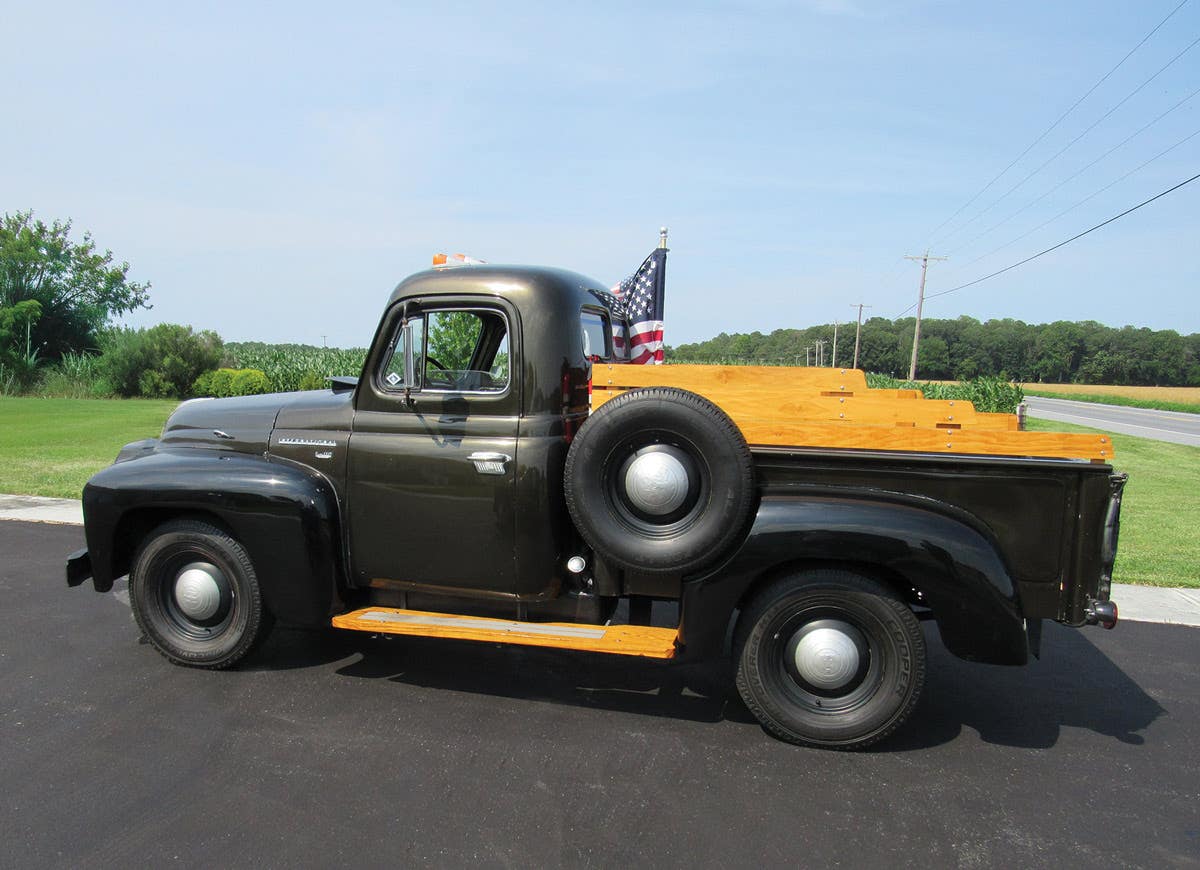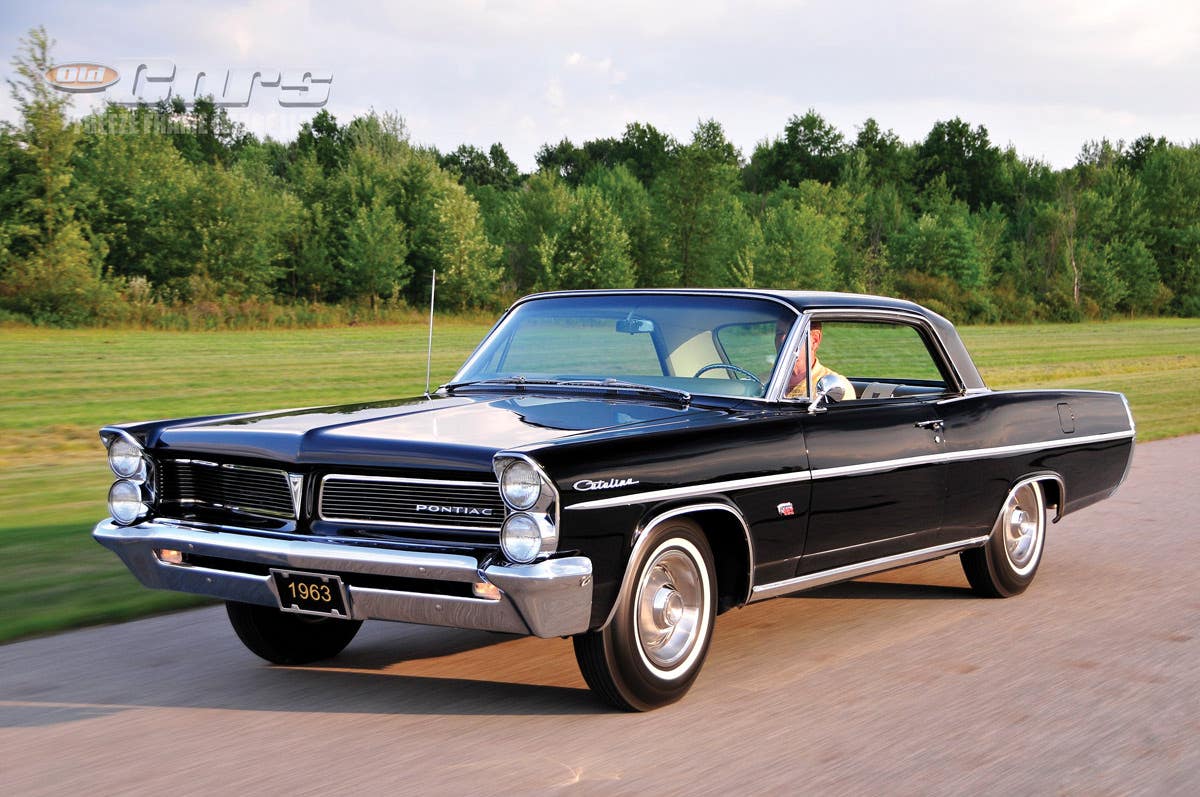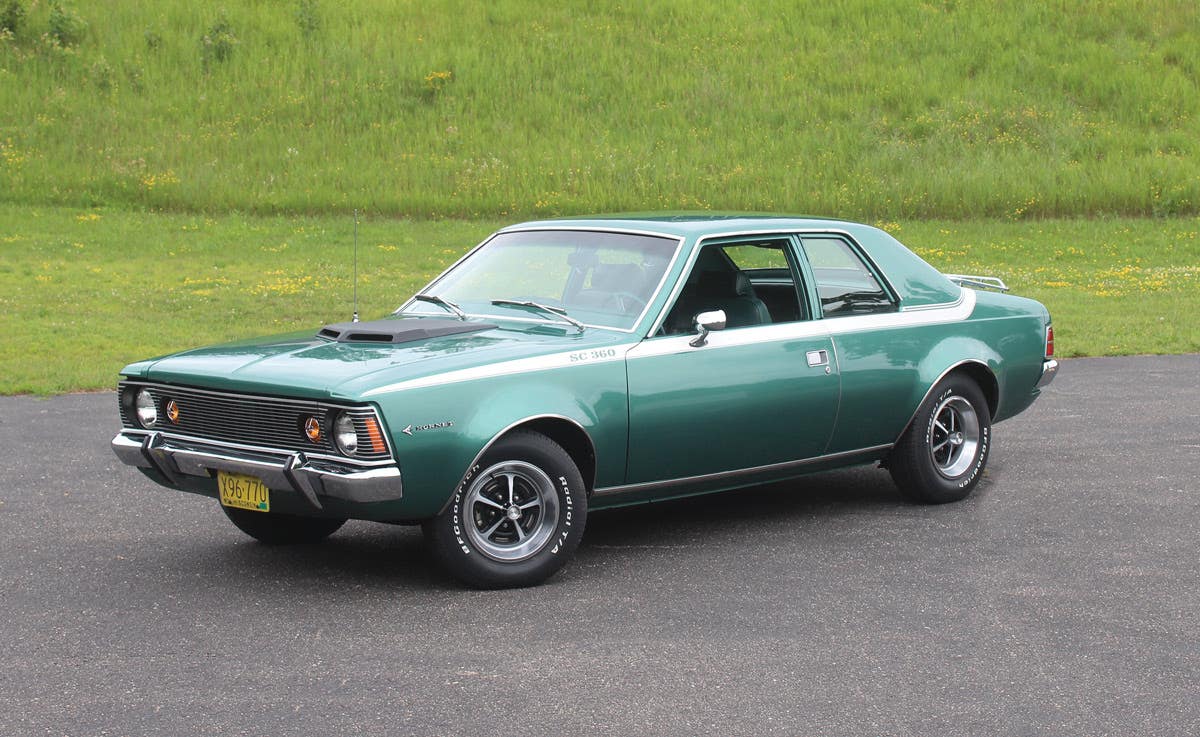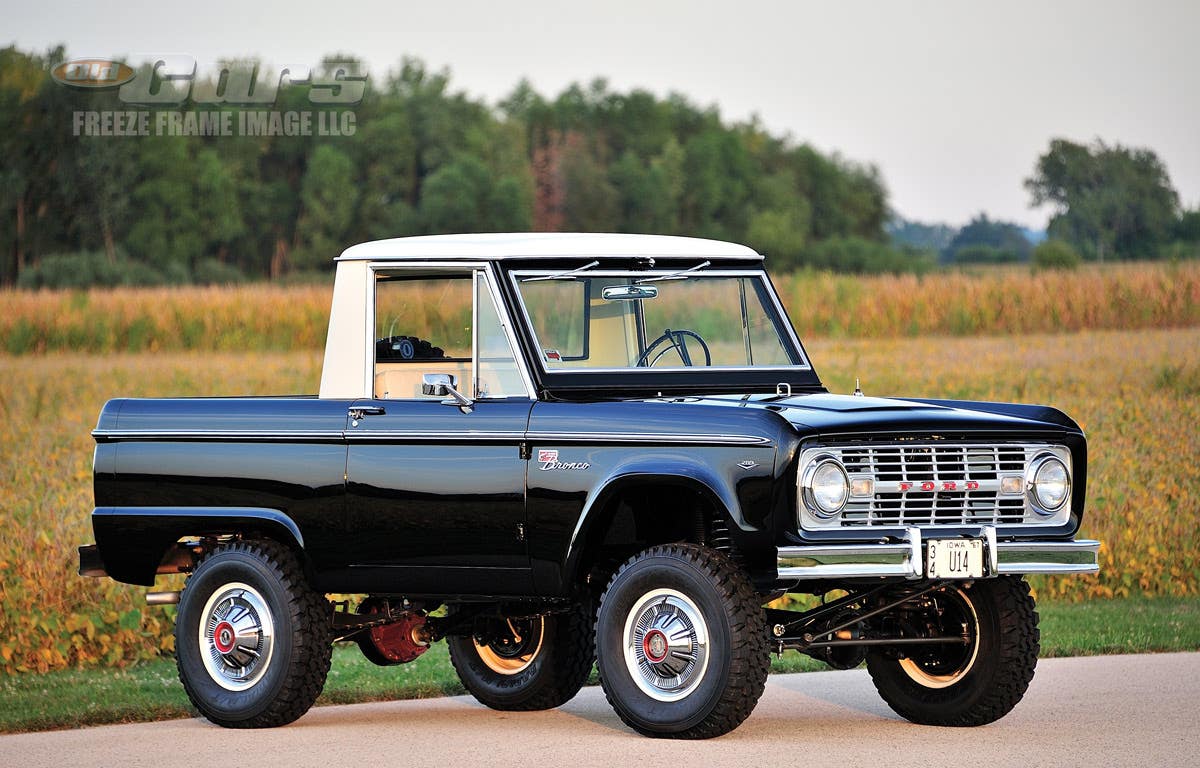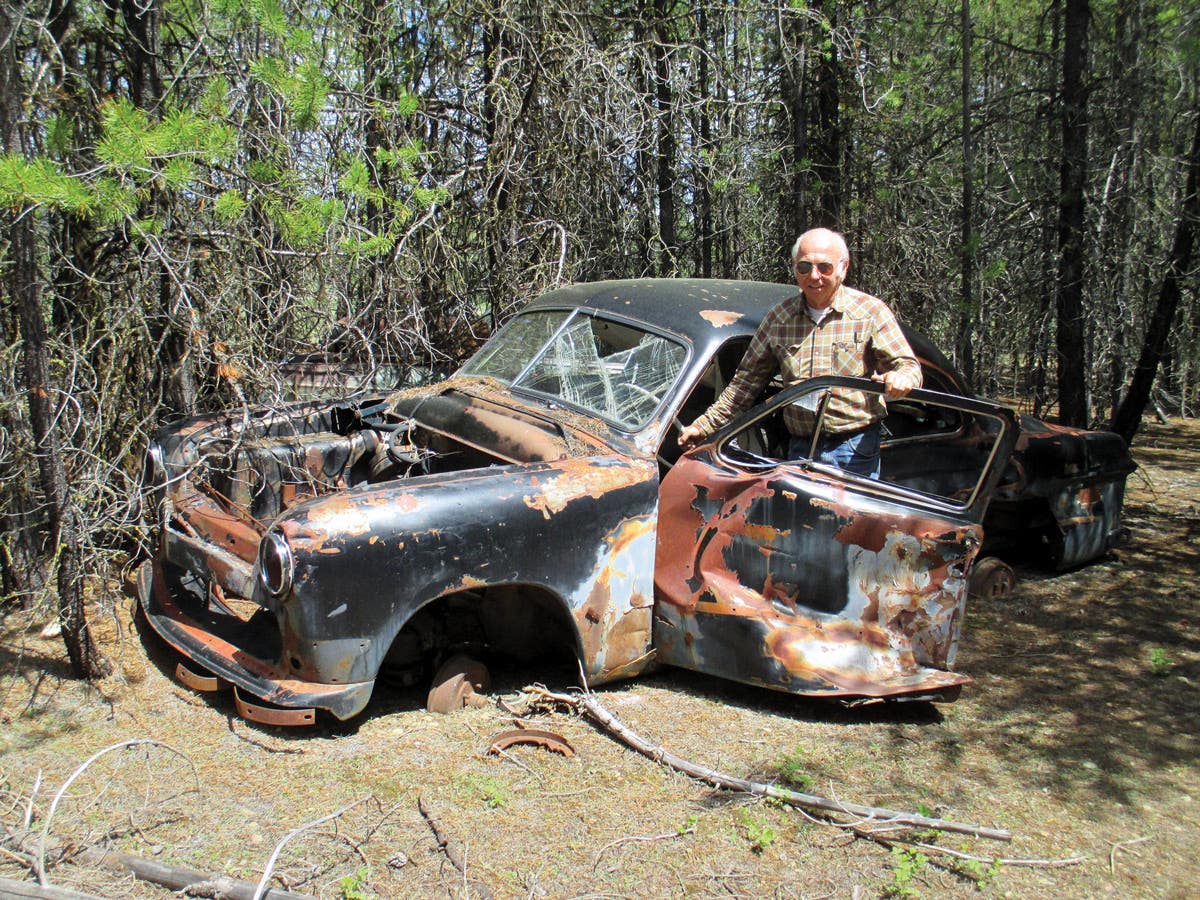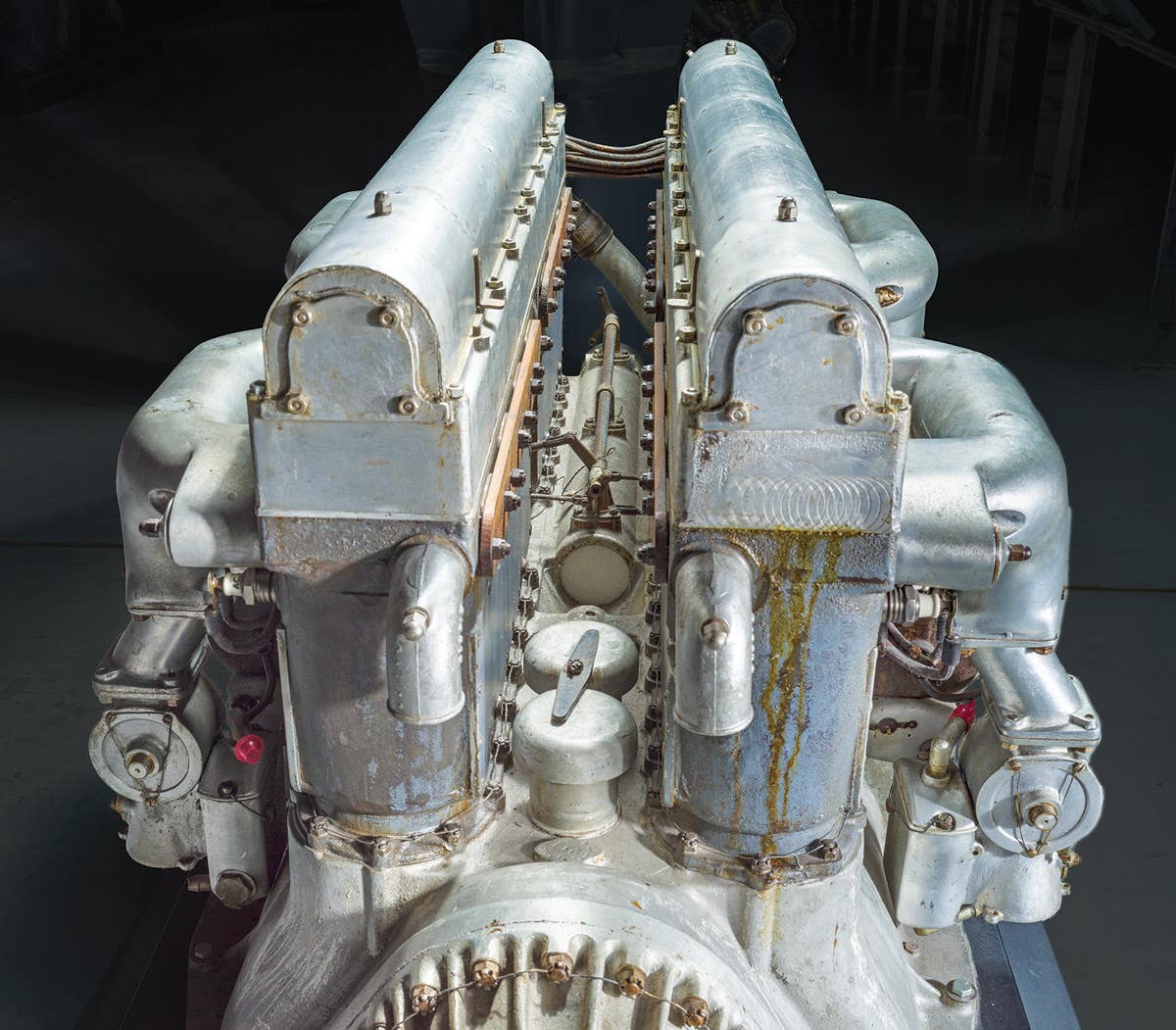A Look at Willys’ Forward Control Jeeps
Looking back at the innovative Willy’s Forward Control Jeep. Were the cabover trucks too forward for their time?
By Steve Turchet
In the early 1950s the American public seemed to think that pickups should have external running-boards and cramped, narrow cabs, and they just weren’t ready to accept a truck without them. Why? Maybe because “everybody else” seemed to feel the same way. An interesting footnote is that Studebaker’s last line of trucks in the mid 1960s—a beautiful, sleek and modernistic design compared to the squared and rather chunky-looking Big Three offerings—featured an optional sliding rear window in the cab … something the Big Three didn’t come out with until the 1970s! The same sort of thing has applied to many other practical and innovative concepts … including the Willys Forward Control Jeep vehicles.
Willys' Build-up to Forward Control
There are far too many interesting facts and bits of history about the Willys “FC” line of vehicles to even begin to put in one article but, in brief, Willys Motors and its parent company, Kaiser Corporation, had done very well for themselves during WWII … Willys, of course, with its amazing Jeep, and Kaiser with its various enterprises, including the building of Liberty and Victory ships. However, after the war, Willys found itself in competition with itself—its new civilian Jeep, the CJ2A, was competing for sales with the thousands of War Surplus MBs and GPWs already flooding a rather limited market. Nor did the CJ2A offer many advantages or features over its wartime counterparts which would have enticed anyone to buy it instead of an “old Army Jeep.”
Indeed, early CJ2As, except for being “non-militarized” in regard to blackout lights and electrical components, were almost totally stock MBs … very early models even used the MB’s small 4½-inch recessed headlamps; and even after the switch was made to “modern” externally-mounted 7 inch sealed-beams, the parking lights were simply the military convoy lamps fitted with clear lenses. Even the shovel and axe indentations on the body (left side and below the driver’s door) were included on early model CJ2As. About the only really new and actually useful features on the CJ2A were the tailgate and the outside gas filler cap.
Willys then attempted to attract more Jeep buyers by coming out with a slightly improved version, the CJ3A. But the improvements were mainly cosmetic—a different (one piece) windshield, and real civilian-style parking lamps.
The Willys trucks (mostly pickups) soon attracted a small but relatively substantial following among farmers, ranchers, contractors, and folks who lived in rural areas or places like Alaska, being they were the first line of light vehicles offered in the U.S. with factory four-wheel-drive. (Although several companies such as F.W.D., Oshkosh and Marmon-Herrington had been building medium- and heavy-duty, all-wheel-drive trucks since way back before WWI.) The boxy Willys station wagon also found some degree of popularity with ranch, farm and rural families who weren’t afraid to trade style for practicality. No doubt a few hunters, fishermen, campers and other adventurous outdoor individuals found the concept of a four-wheel-drive station wagon appealing. Although it should be noted, public interest in recreational four-wheeling was almost nonexistent in the 1950s.
Both the pickup and the station wagon could also be ordered with conventional two-wheel-drive, though most people seemed to feel that if you were going to put up with a rather odd—even ugly—vehicle (compared to what other manufacturers were offering) then it darn well better do something special, like being able to climb a mountain. This same philosophy seemed to apply when Willys introduced its sporty Jeepster. It is hard to understand why Willys didn’t equip this rather bizarre-looking roadster with four-wheel-drive! This would have been about its only practical appeal. Like they say about a bad movie (or the Ford Edsel) “the public stayed away in droves.” Ironically, when Willys/Kaiser again introduced a Jeepster in the late 1960’s, it did have four-wheel-drive and proved to be relatively successful.
Nevertheless, and possibly because they still had some wartime profits socked away, Willys survived its Jeepster mistake. By then they had once more improved the basic CJ by introducing the CJ3B, which featured a new engine: the F4-134 Hurricane. This was an F-head engine as opposed to the previous L-head model. It produced 72 horsepower at (a very optimistic) 3600 rpm and was a considerable improvement over the flathead model. However, due to the design it was also taller than the L-head, which required raising the hood and cowl on what was the CJ3A’s body. Some folks think this looks odd or ugly, but I’ve owned a couple of these Jeeps and I’ve found their appearance sort of grows on you. They are definitely their own Jeep, and if you look at them in this light instead of comparing them with the earlier models you’ll probably agree. They are every bit as much of a real Jeep as a GPW, MB, CJ2A, CJ3A, or M38, and certainly more so than an M151 (which, in my opinion, is not a “real Jeep” at all).
Of course, another thing that was keeping Willys afloat and bankrolling its various new concepts were their government contracts (and not just the U.S. government) for the M38 which was basically a militarized version of the CJ3A. Jeeps were also being built under Willys license in many other countries, such as this Willys/Mitsubishi CJ3B-J4. Another notable foreign manufacturer was Mahindra Jeep in India.
In addition to the M38, Willys was building M606s for the U.S. military, and also for the armed forces of many other countries. The M606 was basically a militarized version of the CJ3B. Bear in mind that the WWII Jeeps were built from the ground up as tactical military vehicles rather than adapted from an existing civilian design, but now Willys was basically doing just the opposite. Most M606s were either exported to, or built in, other lands. Those used by the U.S. military generally went to the Navy and U.S.M.C.
Willys kept plugging along on the sales of its CJ3B, Jeep trucks and station wagons to the civilian market, adding special models and refinements from time to time, along with its military sales of the M38 and M606 in the U.S. and around the world. Willys also built M274 Mules for the U.S. military; and its venerable L-head engine was still widely used in industrial applications such as welding machines, generators, and even marine conversions. An addition to its line in the early 1950s was the CJ5 (and also the long wheelbase CJ6). These vehicles became the military M38A1 and the M170 ambulance, respectively. For a time, Willys did indeed build both the CJ3B and the CJ5. Its DJ (“Dispatcher”) models continued to be popular with various municipalities and other domestic government agencies. We’re all familiar with the ubiquitous postal Jeep, of course, although Willys also built what was basically a "box on wheels" for the Postal Department, and you’ll still see a few of these doing service as ice-cream trucks.
Brooks Stevens' New Concept
Then, in 1956, Willys commissioned no less than the famous Brooks Stevens to design an entirely new line of “Forward Control’ (“FC’) cab-over-engine vehicles. That name might not ring a bell to a lot of folks under forty, but among Brooks Stevens’ many design accomplishments was the 1939 “Steam-O-Matic” iron, the l948 Harley-Davidson, the 1955 “Evinrude Lark” outboard motor, the “Lawnboy” lawnmower, and (you’re sure to get this one) the Miller High Life logo. Oddly enough, this wasn’t the first time Willys had enlisted the services of Mr. Stevens. He had also designed the ill-fated Jeepster! Of course, it probably wasn’t his fault that Willys didn’t have the sense to include four-wheel-drive.
In November of 1956, the Willys FC-150 was introduced to the public. I wasn’t there so I can’t describe the initial reaction, though I suspect it was probably mixed and included some bewilderment. Why? Well, for one thing, except for heavy- and medium-duty trucks, this was virtually the first U.S. vehicle to feature such a design and (probably) no one knew what to make of it. It might have been the “wave of the future,” or it might have been just plain weird. About the only comparable vehicle in the U.S. at that time (and in very small numbers) was the Volkswagen “bus,” which wouldn’t gain widespread popularity until the “hippies”" (and surfers) adopted them in the mid 1960’s.
It’s tempting to say that some of the FC-150’s design features were lifted from the VW bus; but, after all, a nearly "horizontal" steering wheel and a flat, “plain-Jane” dashboard are pretty common to most cab-over-engine vehicles. There was also a small English van known as a “Thames Freighter”—a few tooling about in the U.S.—which shared many features with the VW (except the rear engine). Another interesting fact is that Land Rover also came out with their cab-over-engine model about this time. (By the way, the first prototype Land Rover was actually built on a WWII Jeep chassis.)
Speaking of chassis, it’s also tempting to say that the FC- 150 was built on a CJ5 chassis, but that would depend upon one’s definition of “chassis.” True it shared the same axles, transmission, transfer-case, and many other mechanical components with the CJ5, along with the F4 Hurricane engine, but the frame was different, as well as the steering column and setup. (Don’t make the mistake of buying a junked FC-150 to score a new steering gear for your CJ5!)
There’s no denying that the FC-150 was a very unique and innovative vehicle for its day ... perhaps too much so. For one thing, it made wonderful use of all available space, as do most cab-over-engine designs. The cab was huge and roomy, and the bed was a bit over six feel long, quite an accomplishment for a vehicle with only an 81-inch wheelbase. However, due to the bed’s configuration (with full-length interior “side steps”) not all of that space could be put to good use. By the way, this was before U.S. pickup beds became more or less “standard” size, including the height of the sides.
I’ve owned two FC-150s, and have encountered the same problems that many of their original owners faced: for one thing they were extremely nose-heavy when running empty and would literally fall on their cute little faces when trying to descend a steep grade, especially if you slammed on the brakes. The early models (of which I had one) used the same front axle as the CJ5, which not only looked very odd from the front because it had so narrow a track (48.4 inches) compared to the cab, but also made the vehicle touchy on the highway and generally clumsy, tippy (perhaps even scary) and prone to roll-overs off-road. Wider tires and wheels would have helped, but aftermarket accessories like these (along with the stores to sell them) were still in the distant future.
Willys did attempt correct this problem on later model 150s by using a slightly wider axle, which increased the track to 57 inches (my second 150), but, speaking from experience, wider tires and wheels are still the best and safest way to go for any 150 (and besides they look really cool). FC-150s also suffered from front spring mount failure (check yours now) because so much of their weight was forward, and the front springs themselves, along with the steering gear, weren’t really strong enough for the job.
In general appearance, FC Jeeps always look like they should have “Tonka” painted on the front (I’ve seen several that actually do!). As with their trucks and station wagons, Willys capitalized on the Jeep recognition factor by using a “Jeep’s” barred grille and painting that area a contrasting color. The effect on people who’ve never seen an FC before is that someone transplanted the front of a CJ onto the FC’s cab.
Willys offered the FC-150 in several models and with a lot of optional equipment (mainly geared toward construction and agriculture). A stake-bed model was available. Most of the stake models had a heavy counterweight added between the rear frame members to increase traction and keep them from standing on their noses when descending a steep hill empty. Willys intended the FC-150 for local or rural use, and with a gear ratio of 5.38.1, the little four-banger engine, plus an imaginative 5000 pound GVW rating, they were limited to around 50 mph (sometimes 55) and were definitely not freeway vehicles. On the other hand, with their wide body width compared to track (mainly the cab) and stability problems, they were hardly what you would call “dedicated off-roaders” either. They did, however, perform very well in the situations that Willys seems to have intended, such as spraying orchards, grooming golf courses, or for construction work where a light, compact cargo vehicle with four-wheel-drive filled the bill. A few FC-150s did duty as miniature fire or airport crash trucks. And, with their comfortable, well-sealed (and heated) cabs, they also made good snow-removal vehicles, though their vacuum windshield wipers were less than adequate for a blizzard. Indeed, many 150s are still out there working today.
It would be safe to say that although the FC-150 didn’t exactly capture the hearts of the U.S. motoring public, it was still a success in its own right (but only after Willys fixed a few of the problems such as widening the track). The FC-150 was definitely a much greater success than the ill-fated Jeepster. The fact that production of these vehicles continued for seven more years attests to that success.
Now, speaking again of ideas and concepts that are way ahead of their times, Willys also commissioned prototypes of a van and a six-door commuter vehicle based on the 150’s chassis. Still, sales figures couldn’t have been too dismal, because in 1957, Willys introduced its FC-170. Loosely based upon the conventional pickup chassis, it shared the same cab with their smaller brothers, providing an excellent view for the driver as well as making practical use of every inch of space. Wheelbase was just over 103 inches, track was a stable 63 inches, and the bed, though narrow, was an incredible nine feet long. FC-170s were fitted with Willys’ L-head 226 cid six-cylinder “Super Hurricane” engine—the same as used in the pickups and station wagons—which delivered 105 horsepower at (an optimistic) 3600 rpm. A four-speed transmission was optional on the 170, but most used the Warner T-90A three-speed, plus a Spicer 2-speed transfer case.
The front axle was usually a Spicer 44-F with a 4.89.1 ratio and a 3500 pound capacity, while the rear was a Spicer 53, semi-floating, with a 4.88.1 ratio and 4500 pound capacity. Power-Lok was optional. GVW was a respectable (and realistic) 8000 pounds. Willys also offered a dual rear wheel stake-bed model with bigger brakes and a GVW of 9000 pounds.
The FC-170 may have been one of the best vehicles Willys ever built—next to the Jeep, of course—but, again, this was a time of “longer, lower, wider and bigger”, and the Forward Control design was just too far ahead of its time in regard to the American public’s acceptance of light or personal cab-over-engine vehicles. It’s ironic that Willys/Kaiser got out of the Forward Control business—the last of the FC-150s and 170s were built in 1964—about the same time the "Big Three" were introducing their own cab-over pickups and vans!
Like the FC-150s, FC-170s were available with many options, though, these options were geared more toward agriculture and construction needs than personal, pleasure, or recreational use. Many FC-170s were fitted with snow-removal or fire-fighting apparatus and can be found still hard at work.
The military goes "Forward"
As with the CJ3B/M606, Willys also produced a military version of the 170. There were four basic models: the M676 which was almost identical to the civilian 170 pickup. Then there was the M677, which was a crew-cab pickup. There was also the M678 which was a van/carryall (with windows), and the M679 which was usually an ambulance but could also be a utility van without windows. There were several minor variants, such as two-door carryalls (with windows).
As with the M606, most of these military FCs went to the U.S. Navy, though others were exported or built overseas. And, like the M606, most were militarized (or not) to varying degrees, from full tactical gear and brush-guard on down to a simple Navy Gray paint job on an otherwise civilian unit, although, generally speaking, Willys didn’t offer the crew-cab or van models to the civilian market. This may have been a mistake on their part, because the U.S. would have to wait almost 20 more years for a factory four-wheel-drive van. This might have been one more concept too far ahead of its time.
Again, generally-speaking, most of the tactical military FC models were equipped with a Cerlist 3-cylinder diesel. These were two-cycle engines somewhat similar to the G.M./Detroit 353 in that they were noisy, smoky and dirty. They had a 170 cubic-inch displacement, and put out 85 horsepower at (a loud) 3000 rpm. However, some military models did come equipped with the Willys 226 L-head gasoline engines. To make things even more confusing, some military models had 3-speed transfer-cases and some even had Power-Lok axles! This sort of thing can be a nightmare if you’re trying to restore a basket-case vehicle. On the other hand, it could also be a blessing because here you can create a rare and fascinating MV that will be “proper” in many different configurations. Parts and information about the Cerlist diesel are virtually nonexistent today.
Most of the diesel-equipped military FCs had the standard M-series 24-volt electrical system and were fitted with the standard M-series light switch and blackout lamps.
Buying an FC Jeep
If your interest has been piqued and you’d like to attempt to locate and restore an FC Jeep—military or not—then your best bet is to run a “Wanted” ad in this magazine (what else am I gonna say?) and, of course, keep checking the “For Sale” ads. Like most rare vehicles, FCs turn up in the most unexpected places—check your local papers and driveways; and remember that a lot of sellers don’t really know much about the FCs. In fact, if you’ve read this article you might know more than they do. At the moment, FC prices are not particularly high. Body parts and especially the windshield will be very hard to locate. I’d pass up a unit with a bad or rusted body (or a broken windshield) even though it ran perfectly in favor of a good body with missing mechanical components, though the steering gear is also hard to find. This is a vehicle where you will probably need or want another unit for parts sooner or later. As I mentioned earlier, I presently know of no source of information and/or parts for the Cerlist diesel engine, though I suspect there is probably someone out there with a whole barn full of Cerlist stuff.
As I’ve said in the past, never buy any historic military vehicle because you think you can fix it up and sell it for a profit. Buy it only because you like it. The Willys FCs, both military and civilian, are unique and interesting vehicles with a fascinating history, and deserve to be preserved and restored.
That is, if you happen to be a forward-looking individual.
*As an Amazon Associate, Old Cars earns from qualifying purchases.



